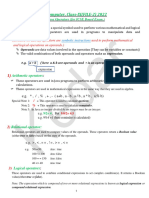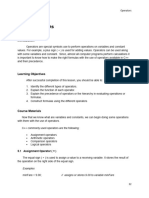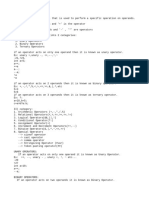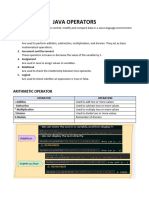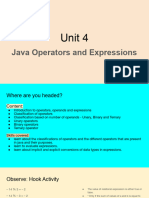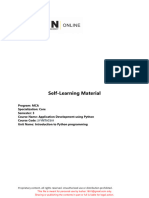0% found this document useful (0 votes)
10 views25 pagesOperators
Chapter 4 of Grade 9 ICSE Computer Applications, Java programming
Uploaded by
Nilofar ShaikhCopyright
© © All Rights Reserved
We take content rights seriously. If you suspect this is your content, claim it here.
Available Formats
Download as PDF, TXT or read online on Scribd
0% found this document useful (0 votes)
10 views25 pagesOperators
Chapter 4 of Grade 9 ICSE Computer Applications, Java programming
Uploaded by
Nilofar ShaikhCopyright
© © All Rights Reserved
We take content rights seriously. If you suspect this is your content, claim it here.
Available Formats
Download as PDF, TXT or read online on Scribd
/ 25







